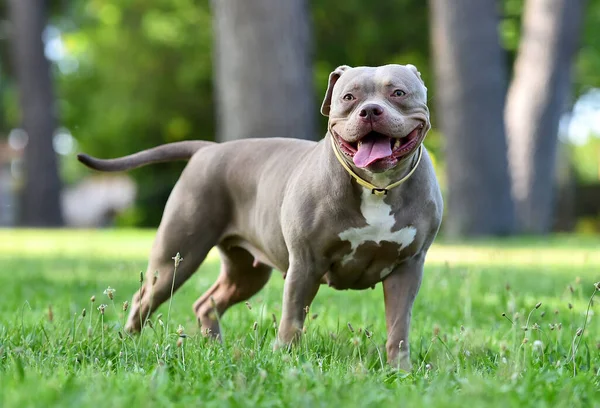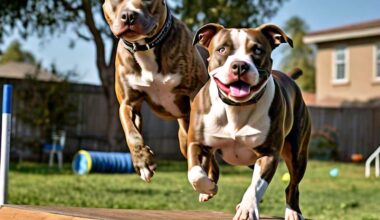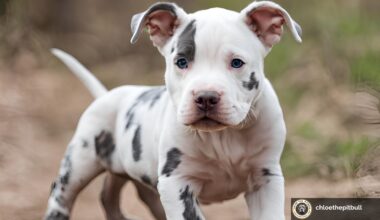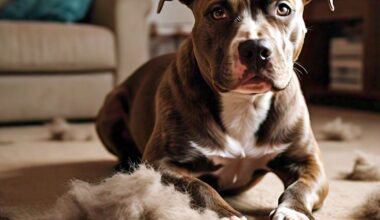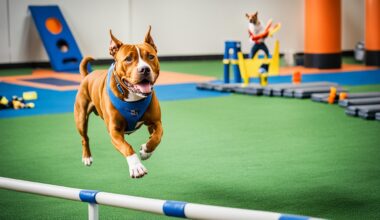How much exercise does a Pitbull need? Pit bulls are known for their high energy, muscular build, and affectionate nature. But behind their playful demeanor lies a vital question for every owner: How much exercise does your Pitbull really need?
Providing the right balance of physical and mental stimulation is key to ensuring your Pitbull thrives both physically and emotionally.
Why Exercise Matters for Your Pitbull
Physical Benefits
Pit bulls are athletic dogs that require regular exercise to maintain their strength and stamina. Daily physical activity helps:
- Prevent obesity by burning calories.
- Strengthen muscles and bones, reducing the risk of joint issues as they age.
- Improve cardiovascular health by enhancing heart and lung function.
Mental Benefits
Exercise isn’t just about physical health; it’s crucial for mental well-being too. Pit bulls are intelligent dogs that thrive on mental stimulation. Regular activity can:
- Reduce anxiety and stress.
- Prevent destructive behaviors like chewing or digging caused by boredom.
- Strengthen the bond between you and your dog through interactive play.
How Much Exercise Does a Pitbull Need: The Gagic General Guidelines
On average, adult Pit bulls require 1–2 hours of exercise daily. This can be divided into multiple sessions to keep them engaged throughout the day. However, the exact amount depends on factors like age, energy levels, and overall health.
- Puppies: Young Pit bulls need light exercise—about 5–7 minutes per month of age per day. For example, a 3-month-old puppy would need 15–20 minutes of activity daily.
- Adults: Healthy adult Pit bulls thrive with 45–60 minutes of moderate to intense exercise daily.
- Senior Dogs: Older Pit bulls may require less strenuous activities, such as short walks or gentle play, depending on their health condition.
Tailoring Exercise to Your Dog
Every Pitbull is unique. Some may have boundless energy requiring additional workouts, while others might prefer shorter but more frequent sessions. Always monitor your dog’s behavior during and after exercise to ensure they’re not overexerted.
Types of Exercise for Pit bulls
1. Walking
Walking is a staple for any dog’s routine. For Pit bulls:
- Aim for at least 30 minutes per walk, twice a day.
- Allow them to sniff and explore during walks—it provides mental stimulation.
- Use a sturdy leash or harness to manage their strength and prevent pulling.
2. Running
Pit bulls love running due to their high energy levels:
- Start with short runs and gradually increase intensity.
- Avoid running during hot weather as Pit bulls are prone to overheating.
- Running alongside you during jogging sessions is an excellent way to bond.
3. Agility Training
Agility courses challenge both the mind and body:
- Set up obstacles like jumps, tunnels, or weave poles in your backyard or visit an agility park.
- This activity improves coordination and strengthens muscles while keeping your dog mentally sharp.
4. Fetch
Fetch is a classic game that never fails:
- Use durable toys that can withstand their powerful jaws.
- Play in open spaces like parks or fenced yards for safety.
- Incorporate commands like “sit” or “stay” before throwing the toy to reinforce training.
5. Swimming
Swimming is a low-impact exercise ideal for Pit bulls:
- It’s particularly beneficial for older dogs or those with joint issues.
- Use dog-friendly pools or safe natural water bodies.
- Always supervise swimming sessions to ensure safety.
6. Interactive Play
Interactive toys such as puzzle feeders or tug-of-war ropes provide both physical exertion and mental engagement:
- Rotate toys regularly to keep them interested.
- Use reward-based play to encourage positive behavior.
Mental Stimulation as Exercise
Mental stimulation can tire out a Pitbull just as much as physical activity:
- Training Sessions: Teach new tricks or commands to challenge their intelligence.
- Puzzle Toys: Hide treats inside toys that require problem-solving skills to access.
- Games: Play hide-and-seek by hiding treats or toys around the house for them to find.
Safety Considerations During Exercise
Avoid Overexertion
While Pit bulls are energetic, too much exercise can lead to fatigue or injuries:
- Watch for signs like excessive panting, limping, or reluctance to continue playing.
- Provide plenty of water breaks during activities.
Weather Conditions
Pit bulls are sensitive to extreme temperatures:
- In hot weather, exercise during cooler parts of the day (early morning or evening).
- In cold weather, use protective gear like sweaters if necessary.
Health Concerns
Consult your veterinarian before starting any new exercise routine, especially for older dogs or those with medical conditions like hip dysplasia.
Developing an Exercise Schedule
A structured schedule ensures your Pitbull gets consistent physical and mental stimulation:
| Day | Activity | Duration |
| Monday | Morning walk + fetch in the yard | 60 minutes |
| Tuesday | Agility training + puzzle toy session | 45 minutes |
| Wednesday | Long walk in the park | 60 minutes |
| Thursday | Swimming + trick training | 50 minutes |
| Friday | Morning run + tug-of-war | 60 minutes |
| Saturday | Off-leash play at a dog park | 90 minutes |
| Sunday | Light walk + hide-and-seek indoors | 40 minutes |
Common Mistakes to Avoid
- Inconsistent Routines: Skipping exercise days can lead to pent-up energy and behavioral issues.
- Overfeeding After Exercise: Rewarding with excessive treats can negate the benefits of physical activity.
- Repetitive Activities: Lack of variety can make exercises boring for your dog.
Conclusion
Pit bulls are active dogs that thrive on regular exercise tailored to their needs. By combining physical activities like walking and running with mental challenges such as puzzle games and training sessions, you’ll keep your furry friend happy, healthy, and well-behaved.
Ready to give your Pitbull the active lifestyle they deserve? Start incorporating these exercises into their routine today! Remember, a well-exercised Pitbull is not just healthier but also more content and connected with you as their owner.

